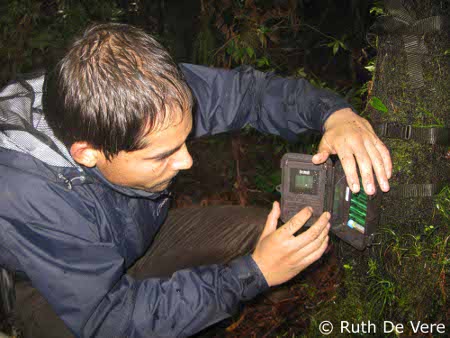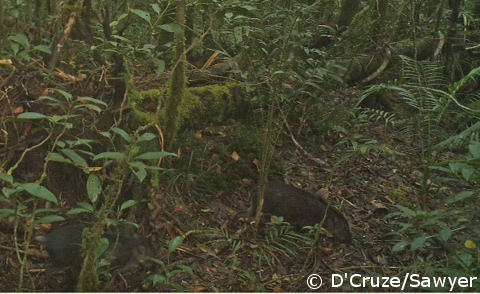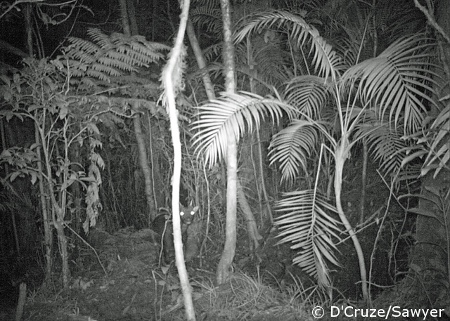The Negros Interior Biodiversity Expedition (NIBE) 2012 saw a team of biodiversity scientists explore the interior of the North Negros Natural Park on Negros Island in the Philippines. Building on the successful pioneering expedition in 2009, which established the ‘route in’, the team undertook a more detailed biological exploration of an area famed for both endemism and endangerment. Self sufficient and operating in difficult conditions the joint International-Filipino team went further, with more scientists, to better document the value of this unique environment. Expedition leader James Sawyer writes about his experiences in the dense Philippine jungle…
Trekking through the tough wet terrain of the forest I was drawn to the thought that collecting in camera traps reminded me greatly of the good old days of film photography. These days with digital cameras you receive the images in real time but with camera traps you have to collect them in and then wait to download them. A bit like waiting for your photos to be developed.

The NIBE team had amassed 4000 camera trap hours by the time they collected their 20 units in. Placed in key locations of large mammal activity in the interior of the North Negros Natural Park, the wait was agonising to know if the gamble had paid off. After a night in the stunning ‘Tankel Tankel’ undertaking Herpetology surveys and a nerve wrecking morning of dodging landslides, the team started their trek back to the main survey camp picking up camera traps en route.
As we unhooked them from their trees, we were able to check how many photos were taken. Speculation was rife – was the trap with 30 photos on going to yield more results than the one with 800 on? I think at this point we all thought more was better.

We returned to camp with 16 traps and while the team ate dinner I quickly made the first nervous scan through the images on my laptop, mindful of a near dead battery.
The pressure lifted as soon as I saw those first wild images of the Visayan warty pig (an EDGE species and the second rarest pig in the world). I called Dr Neil D’Cruze over from the group shelter and we both celebrated at getting both the pig and Crab Eating Macaque on camera. Was it too much to hope for the Visayan spotted deer too?
The next morning the Filipino mountain leaders came back to camp with the last four camera traps. The tension was unbearable and not helped by the low battery warning on my laptop. Everyone crowded round as the first picture came up on screen.

To whoops of delight we had the Visayan spotted deer on camera for the time in the wild. This species is also the second rarest in the world of its type and had treated us to a range of fantastic if not slightly ghostly shots. All in all most of the shots of the animals were captured during the 24 hours of the full moon and the successful traps were the ones placed in areas of disturbance by the animals.
We knew at this stage we had big news but coming home and then waiting to verify results and then write press releases added a second unbearable wait until we released them upon the world!!! To us the media coverage was great news as it served to highlight these key species and allow us to talk about rainforest and conservation issues to a global audience.
Keep your eyes peeled for James’ next blog… coming soon!